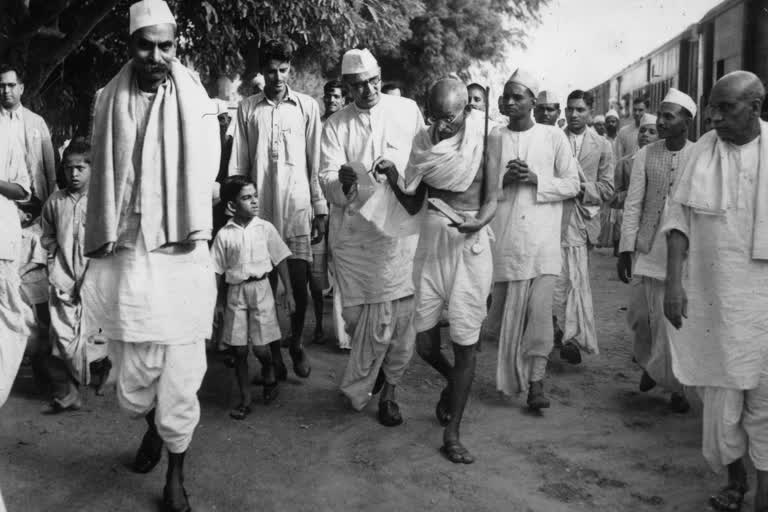Hyderabad: Two central values that Mahatma Gandhi espoused were truth and non-violence. He used them successfully in his method of Satyagrah in an attempt to change the heart of his adversary.
There are organisations and countries which adopt violence as a tool to achieve their objective but ultimately come around to non-violent methods like dialogue and participation in democratic processes to resolve their issues.
The method of conducting peaceful protest, often resorting to fast, was Gandhi's unique contribution to the world, popularly known as Satyagrah or 'an appeal for truth'. A number of organisations, not all of them ideologically believing in non-violence use Gandhi's method of protest. Bhagat Singh fasted while in Lahore jail in support of Jatin Das's fast to demand humane conditions for political prisoners.
The Gandhian methods of padyatras and fasts later adopted by Vinoba Bhave, Medha Patkar, Anna Hazare, Irom Sharmila and others helped them build support for their causes and these leaders were held in high respect by the people and politicians alike because of their Gandhian methods.
Naga National Council and National Socialist Council of Nagaland after having failed to reach an understanding with the government of India launched a separatist movement for sovereignty. Naga Federal government and Naga Federal Army was also formed. Nagaland passed through a phase of violence in which atrocities were committed from both sides - the Nagas as well as Indian armed forces. NSCN leaders refused to meet Indian leaders on Indian soil and meetings used to take place in Europe or Southeast Asia. However, ultimately good sense prevailed and Naga leadership decided to engage with the Indian government in India. Even though the issue still remains unresolved with Nagas who want a separate Constitution and flag, but they have agreed to the concept of peaceful co-existence with India.
Even though in India Maoists and Naxalites continue to fight for their cause outside the parliamentary democracy, the Communist Party of Nepal (Maoist) ended a ten-year civil war by signing a Comprehensive Peace Accord and joined a seven party alliance to end monarchy in Nepal through a parliamentary process. Its most important leader Prachanda or Pushpa Kamal Dahal has held the position of Prime Minister twice. A monthly allowance was promised to members of People's Liberation Army of CPN(Maoist) to stay inside the cantonment.
Last year about 35-40,000 farmers belonging to All India Kisan Sabha associated with Communist Party of India (Marxist) organised a peaceful 180 km long march, demanding complete waiver of loans and electricity bills, implementation of Swaminathan Commission report and Forest Rights Act from Nasik t to Mumbai.
Martin Luther King inspired by Gandhi enunciated that it is possible to resist evil without resorting to violence and to oppose evil itself without opposing the people committing evil. He believed that people who practice non-violence must be willing to suffer without retaliation. 'The non-violent resister not only refuses to shoot his opponent but he also refuses to hate him.'
Nelson Mandela was a co-founder of Umkhonto we Sizwe, the militant wing of African National Congress, and underwent training in employing arms but towards the end of his life, he veered towards Gandhian principles. After 27 years in prison when he became the President of South Africa he called for national reconciliation, essentially pardoning the whites for all the crimes they had committed against people of colour, in one stroke.
Khaled Mashal, the top leader of Palestinian organisation Hamas, which has a government in Gaza but is considered a terrorist organisation by US and Israel, in a private conversation in 2011 in Syrian capital Damascus shared that he considered Gandhi as his ideal because Gandhi was an immense inspiration for all weak people fighting against strong powers because of the injustice done to them.
Even common people have used Gandhi's method to voice their simple demands. We can find in India, sometimes merely individuals or families, on sit-ins outside government offices for redressal of some grievances.
This method of attracting the attention of the authorities is considered legitimate as often some official will usually enter into a dialogue with the victims or will take initiative to solve their problem. Dissent in a democracy based on the principles of non-violence and truth is Gandhi's unique contribution to fight for justice to the human society. Now dissent is considered an integral part of the idea of democracy.
Read: Gandhi’s assassination had both immediate and lasting impact in India



